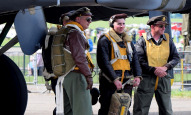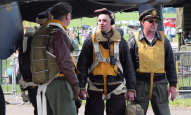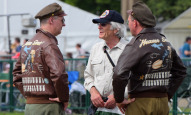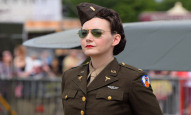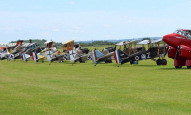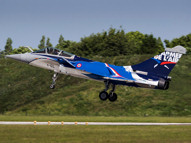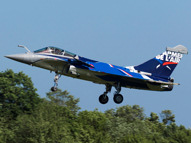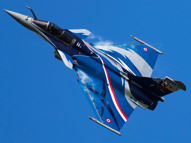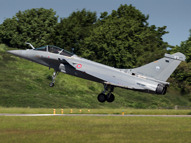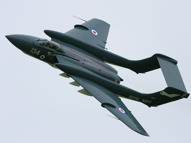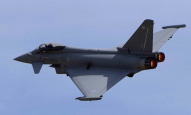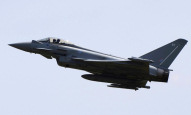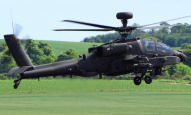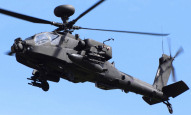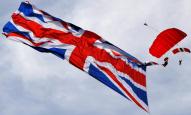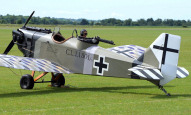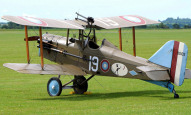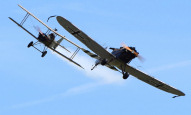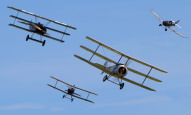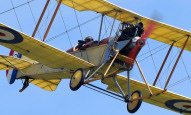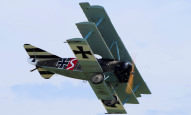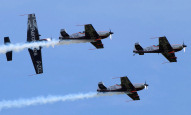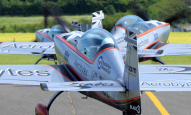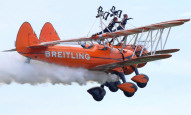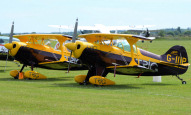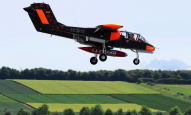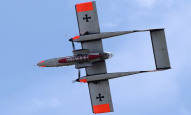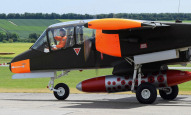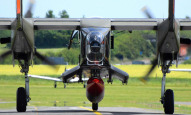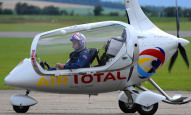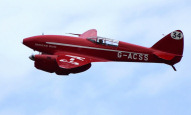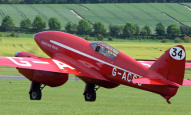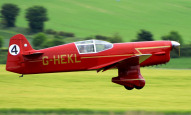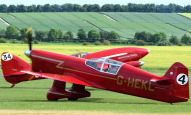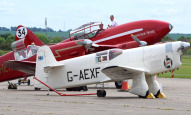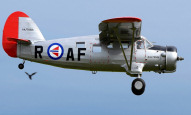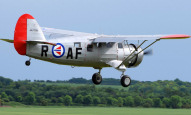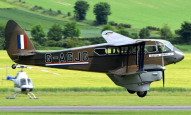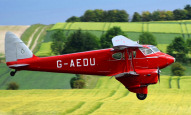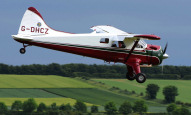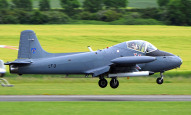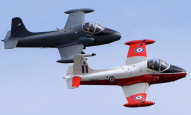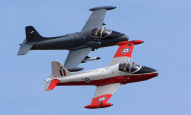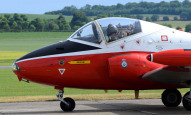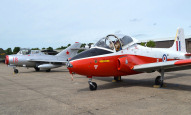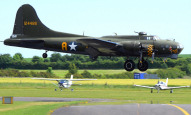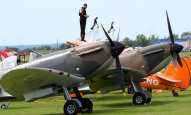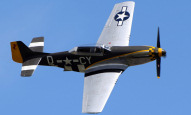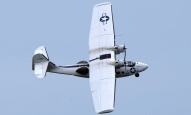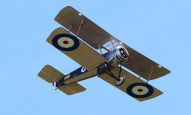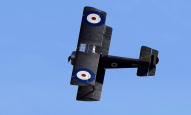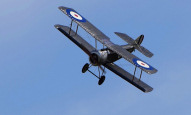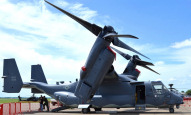
The 'Duxford Air Festival' took place over the May Bank Holiday weekend of the 27th - 28th May 2017. This year marks the centenary of the Imperial War Museum (IWM) and 100 years since work began to create RAF Duxford in 1917.
To commemorate the centenary, an innovative large-scale sculpture 'DX17' has been created by the BAFTA award-winning composer and multi-disciplinary artist Nick Ryan. 'DX17', a spectacular and imaginative storytelling device, will be unveiled to the public on the 16th June 2017 up until September.
IWM Duxford will continue to commemorate its centenary throughout 2017, including the 'Duxford Air Festival' and the 'Duxford Battle of Britain' air show on 23rd - 24th September 2017. It will also participate in the centenary of the creation of the Royal Air Force in 2018.
The 'Duxford Air Festival' was a ticket-only event and a £5 vehicle parking permit was also required for car parking which could be purchased when booking tickets. The impressive museum is free to look around on air show days and includes AirSpace, the newly redeveloped American Air Museum and the Battle of Britain exhibition.
Before the air display, a flightline walk is available for an extra £6, where you can get closer to the static aircraft and photograph them. There are also re-enactors which help bring Duxford's wartime atmosphere vividly to life. The air display started at around 1.15pm and finished at about 6pm which is a bit longer than in previous years.
The
layout of the crowdline, following new safety measures, was the same as last year, where the crowdline was moved forward in the central area of the museum site, and the Land Warfare end of the site was closed off during the air show weekend.
Probably the highlight of the air display was the French Air Force Rafale which displayed on both Saturday and Sunday. The Rafale Solo Display, in its new colourful livery was flown by Captain Jean-Guillaume 'Marty' Martinez who put on a very impressive fast and dynamic aerobatic display. There is another chance to see the French Rafale display again in the UK at the Royal International Air Tattoo at RAF Fairford in July.
Another highlight was Navy Wings de Havilland Sea Vixen (G-CVIX XP924). This is the only flying Sea Vixen in the world today and is based at RNAS Yeovilton in Somerset. The Sea Vixen, flown by Cdr Simon Hargreaves, put on a superb display at Duxford on Saturday but unfortunately suffered hydraulic issues after it returned to RNAS Yeovilton and had to make a wheels-up landing. The pilot performed a highly controlled landing and is safe and well. An inspection of the aircraft for damage will follow over the next few days and further details can be found on the
Navy Wings Facebook page.
The Royal Air Force was represented by the Typhoon FGR4 (ZK354) and the RAF Falcons Parachute Display Team who were to jump on Saturday only. Despite the nice weather on both days there was a gusty wind on Saturday which stopped the RAF Falcons from jumping. The Typhoon display pilot is Flight Lieutenant Ryan Lawton of 29(R) Squadron at RAF Coningsby and he showed off the Typhoon's impressive maneuverability. The Army displayed their WAH-64D Apache AH1 and the Red Devils Parachute Team jumped from a Britten-Norman Islander BN-2A (G-AXUB). The AAC Apache display included some impressive pyrotechnics, with it flying in front of a huge wall of fire, which made for some impressive pictures for the photographers positioned in the centre of the crowdline. On Sunday the display Apache actually went unserviceable and so the spare aircraft on static display was used instead.
Another display using pyrotechnics was the 'Great War Display Team' which brought along nine of their replica World War 1 aircraft and simulated dogfights, bombing and strafing. The Blades Aerobatic Display Team displayed their four Extra EA-300 aircraft which are flown by RAF fast jet and former Red Arrows pilots. The Breitling Wingwalkers performed their breathtaking sequence of acrobatic manoeuvres and handstands, whilst the girls, Gina Marshall and Katie Hobbs, were strapped to the top wings of the team's Boeing Stearman biplanes.
The Trig Aerobatic Team put on a good aerobatic performance in their two black & yellow Pitts Special S-1D biplanes. The Bronco Demo Team's OV-10 Bronco is an American turboprop light attack and observation aircraft developed in the 1960s for counter-insurgency and as a forward air control aircraft. The team have adorned their OV-10 Bronco with a new 'Poppy' livery and 'LEST WE FORGET, 1914-18' graphics. Peter Davies displayed the impressive Calidus Autogyro aircraft, complete with smoke. It is a tandem two-seat aircraft, designed in Germany, 3 years ago, as a comfortable touring machine.
The Shuttleworth Collection brought along their de Havilland DH.88 Comet racer along with two Percival Mew Gull aircraft. The Comet (G-ACSS) is a two-seat racing aircraft developed specifically to participate in the 1934 England-Australia MacRobertson Air Race from the United Kingdom to Australia. The Percival Mew Gull is also a 1930s racing aircraft and the white aircraft (G-AEXF) is an original aircraft while the red aircraft (G-HEKL) is a replica.
The Noorduyn Norseman (LN-TSN) made its debut and is operated by the 'Norwegian Spitfire Foundation'. The Noorduyn Norseman is a Canadian single-engine bush plane designed to operate from unimproved surfaces. It was in a Noorduyn UC-64A Norseman, flown by F/O John R. S. Morgan, in which
Major Glenn Miller was flying as a passenger, when he disappeared over the English Channel on December 15, 1944, possibly due to aircraft carburetor icing or from jettisoned bombs from RAF Lancasters after an aborted raid.
The de Havilland DH.90 Dragonfly was a 1930s British twin-engined luxury touring biplane and the de Havilland DH89A Dragon Rapide was a 1930s British short-haul biplane airliner for 6 to 8 passengers. The de Havilland Canada DHC-2 Beaver was a single-engined, high-wing, propeller-driven, short takeoff and landing (STOL) aircraft developed and manufactured by aircraft company de Havilland Canada. It was used for wide variety of utility roles, such as cargo and passenger hauling, crop dusting and civil aviation duties.
The Strikemaster Pair actually consisted of a Strikemaster Mk82a and a Jet Provost T5 (XW324). The Mikoyan-Gurevich MiG-15UTI displayed on Saturday but had a technical issue prevented it from flying on the Sunday. This MiG-15UTI is operated by the 'Norwegian Air Force Historical Squadron' and was a Polish-built SB Lim-2 (MiG-15UTI), produced by WSK-Mielec in 1952. It is painted and marked as 'RED 18' to represent Russian-Soviet pilot and cosmonaut Yuri Gagarin's MiG-15.
Warbirds displaying at the show included the B-17 Flying Fortress 'Sally B', two Spitfire Mk.Ia aircraft (N3200 & X4650), TF-51D Mustang 'Miss Velma', Plane
Sailing's Catalina and the display debut of the 'Historic Aircraft Collection' (HAC) Sopwith Pup (N6161 G-ELRT). This aircraft has been painstakingly
reconstructed by HAC over the past four years using many original First World War component parts, including an original Le Rhone engine. The Sopwith Pup
displayed on Sunday but did not fly on Saturday due to the windy weather.
On static display was a Bell Boeing CV-22B Osprey (11-0058) from the 352nd SOG, RAF Mildenhall. The Osprey is an American multi-mission, tiltrotor military aircraft with both vertical takeoff and landing (VTOL), and short takeoff and landing (STOL) capabilities. It is designed to combine the functionality of a conventional helicopter with the long-range, high-speed cruise performance of a turboprop aircraft.
Thanks to the 'Imperial War Museum Duxford' for putting on another superb air show this year, and below are the dates for two more air shows at Duxford this year:
• Flying Legends Air Show - Saturday 8th - Sunday 9th July 2017.
• Duxford Battle of Britain Air Show - Saturday 23rd - Sunday 24th September 2017.
Article by Dave Key with photos by John Bilcliffe & Matt Varley - www.military-airshows.co.uk

